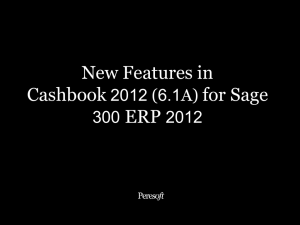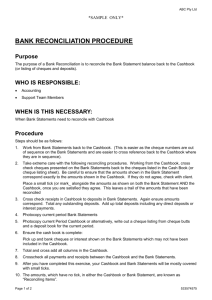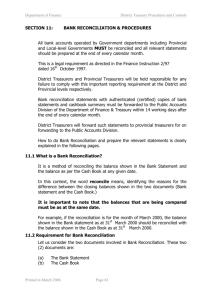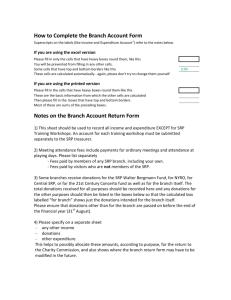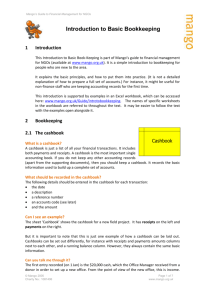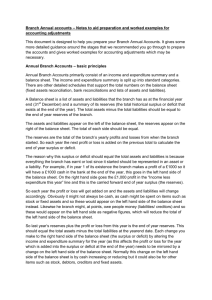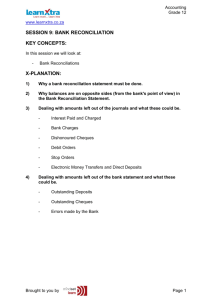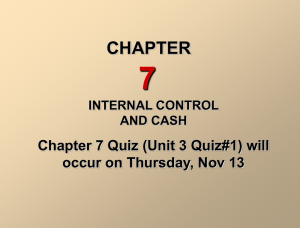How to do Bank Reconciliation Jan2008
advertisement
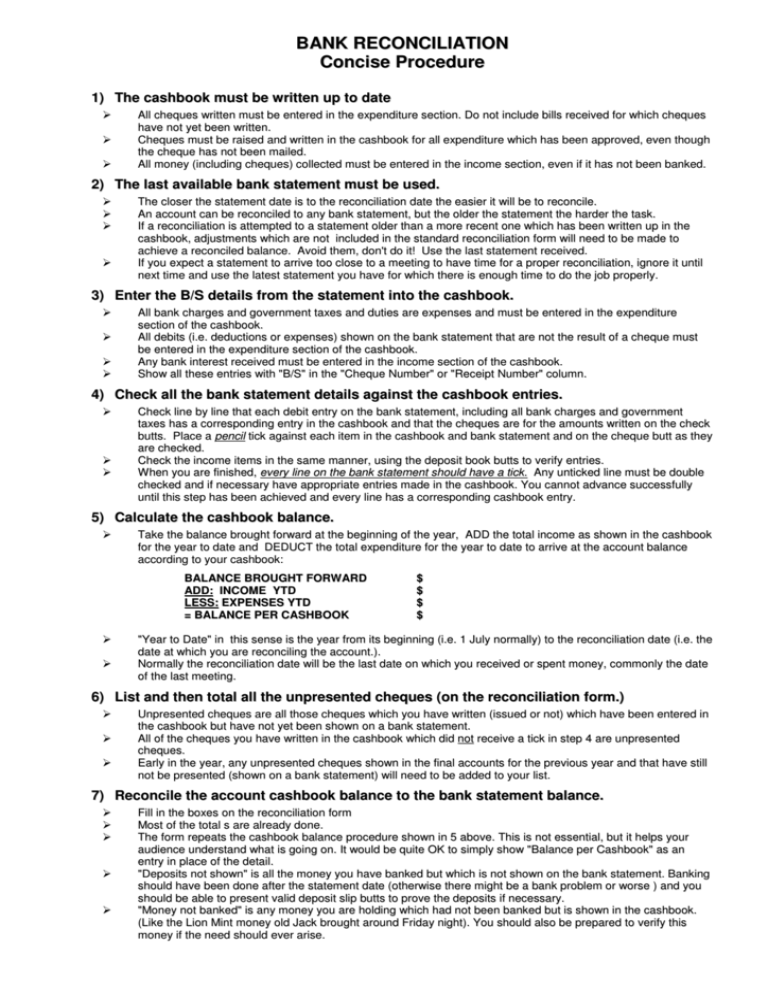
BANK RECONCILIATION Concise Procedure 1) The cashbook must be written up to date All cheques written must be entered in the expenditure section. Do not include bills received for which cheques have not yet been written. Cheques must be raised and written in the cashbook for all expenditure which has been approved, even though the cheque has not been mailed. All money (including cheques) collected must be entered in the income section, even if it has not been banked. 2) The last available bank statement must be used. The closer the statement date is to the reconciliation date the easier it will be to reconcile. An account can be reconciled to any bank statement, but the older the statement the harder the task. If a reconciliation is attempted to a statement older than a more recent one which has been written up in the cashbook, adjustments which are not included in the standard reconciliation form will need to be made to achieve a reconciled balance. Avoid them, don't do it! Use the last statement received. If you expect a statement to arrive too close to a meeting to have time for a proper reconciliation, ignore it until next time and use the latest statement you have for which there is enough time to do the job properly. 3) Enter the B/S details from the statement into the cashbook. All bank charges and government taxes and duties are expenses and must be entered in the expenditure section of the cashbook. All debits (i.e. deductions or expenses) shown on the bank statement that are not the result of a cheque must be entered in the expenditure section of the cashbook. Any bank interest received must be entered in the income section of the cashbook. Show all these entries with "B/S" in the "Cheque Number" or "Receipt Number" column. 4) Check all the bank statement details against the cashbook entries. Check line by line that each debit entry on the bank statement, including all bank charges and government taxes has a corresponding entry in the cashbook and that the cheques are for the amounts written on the check butts. Place a pencil tick against each item in the cashbook and bank statement and on the cheque butt as they are checked. Check the income items in the same manner, using the deposit book butts to verify entries. When you are finished, every line on the bank statement should have a tick. Any unticked line must be double checked and if necessary have appropriate entries made in the cashbook. You cannot advance successfully until this step has been achieved and every line has a corresponding cashbook entry. 5) Calculate the cashbook balance. Take the balance brought forward at the beginning of the year, ADD the total income as shown in the cashbook for the year to date and DEDUCT the total expenditure for the year to date to arrive at the account balance according to your cashbook: BALANCE BROUGHT FORWARD ADD: INCOME YTD LESS: EXPENSES YTD = BALANCE PER CASHBOOK $ $ $ $ "Year to Date" in this sense is the year from its beginning (i.e. 1 July normally) to the reconciliation date (i.e. the date at which you are reconciling the account.). Normally the reconciliation date will be the last date on which you received or spent money, commonly the date of the last meeting. 6) List and then total all the unpresented cheques (on the reconciliation form.) Unpresented cheques are all those cheques which you have written (issued or not) which have been entered in the cashbook but have not yet been shown on a bank statement. All of the cheques you have written in the cashbook which did not receive a tick in step 4 are unpresented cheques. Early in the year, any unpresented cheques shown in the final accounts for the previous year and that have still not be presented (shown on a bank statement) will need to be added to your list. 7) Reconcile the account cashbook balance to the bank statement balance. Fill in the boxes on the reconciliation form Most of the total s are already done. The form repeats the cashbook balance procedure shown in 5 above. This is not essential, but it helps your audience understand what is going on. It would be quite OK to simply show "Balance per Cashbook" as an entry in place of the detail. "Deposits not shown" is all the money you have banked but which is not shown on the bank statement. Banking should have been done after the statement date (otherwise there might be a bank problem or worse ) and you should be able to present valid deposit slip butts to prove the deposits if necessary. "Money not banked" is any money you are holding which had not been banked but is shown in the cashbook. (Like the Lion Mint money old Jack brought around Friday night). You should also be prepared to verify this money if the need should ever arise.
